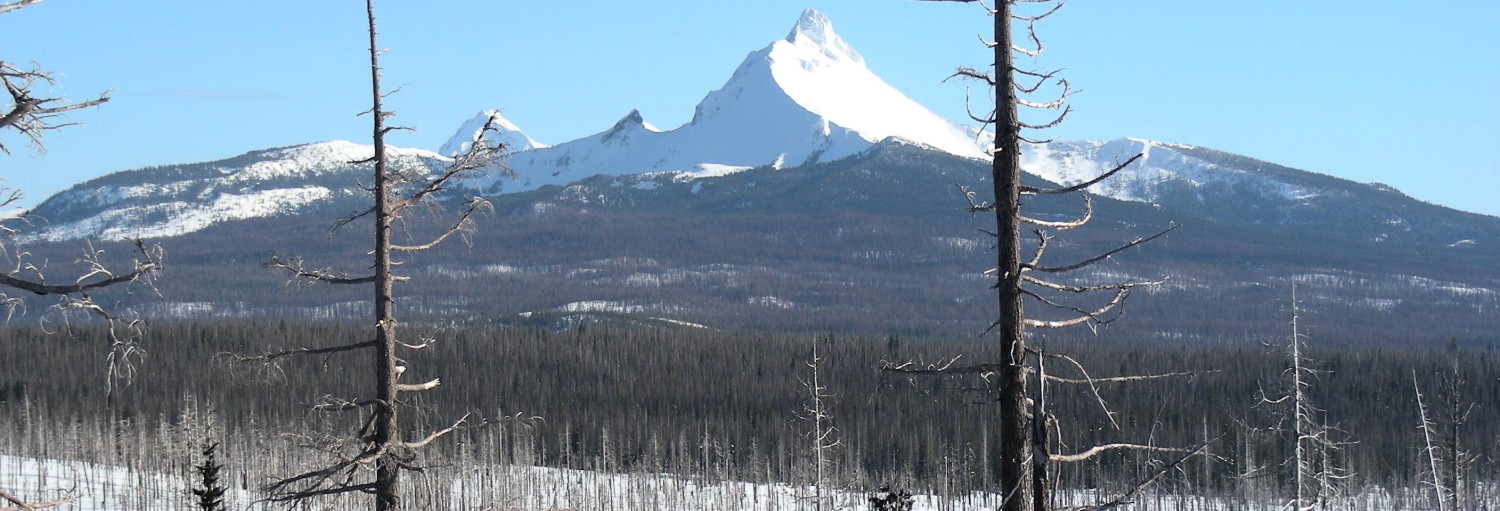
(Full citation: Gleason, K. E., A. W. Nolin, and T. R. Roth (2013), Charred forests increase snowmelt: Effects of burned woody debris and incoming solar radiation on snow ablation, Geophys. Res. Lett., 40, 4654–4661, doi:10.1002/grl.50896.)
Abstract
[1] We document effects of postfire forest conditions on snow accumulation, albedo, and ablation in the Oregon Cascades. We measured snow water equivalent, solar radiation, snow albedo, and snowpack surface debris at a pair of burned and unburned forest plots. Snow accumulation was greater in the burned forest; however, the snowpack disappeared 23 days earlier and had twice the ablation rate than in the unburned forest. Snow albedo was 40% lower in the burned forest during ablation, while approximately 60% more solar radiation reached the snow surface, driving a 200% increase in net shortwave radiation. Significant amounts of pyrogenic carbon particles and larger burned woody debris shed from standing charred trees accumulated on the snowpack and darkened its surface. Spatial analysis showed that across the Western U.S., 80% of all forest fires occurred in the seasonal snow zone, and were 4.4 times larger than fires outside the seasonal snow zone.
Full article:
